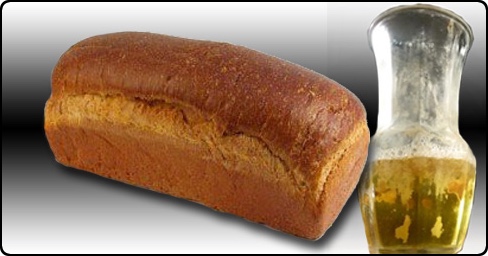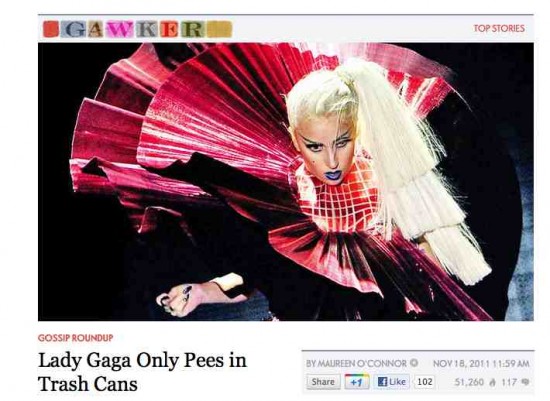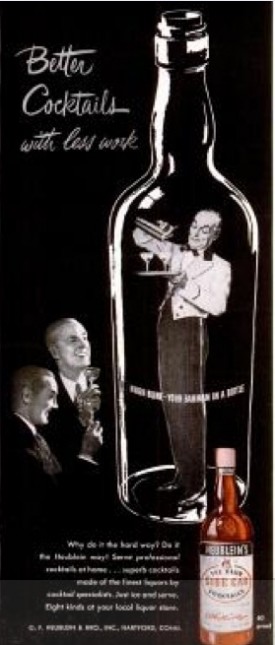Body Fluids
Urine Bread

During the Second World War, prisoners held by the Japanese in an internment camp in Dutch Indonesia subsisted primarily on dry bread they made themselves in a camp bakery. But when their captors stopped supplying them with yeast, it became impossible to keep making the bread — until some of the inmates who were trained chemists figured out it was possible to use urine as a yeast substitute.
In the video above, Pieter Wiederhold, who was held in the camp as a boy with his father, discusses this urine bread. He gives a longer account of it in his book, The Soul Conquers:
The absence of bread was most disappointing. Some creating chemists in our camp got together to think about an alternative way to make yeast. After much discussion and some experimentation, they came up with a solution. They would make yeast using urine. When I heard about it I was surprised but not particularly disturbed. After all, I had eaten frogs and lizards that had been cooked in our soup and I had drunk filthy water from a toilet on the train. Why would it kill me if I ate bread that was made with yeast derived from urine? When he heard about it Father smiled. "As long as I have something to eat to stay alive," he said.
In order to provide the entire camp with bread, a large volume of urine was needed every day. A number of large drums were placed in several locations around the camp and each carried a sign:
"Do your Duty. Think of the yeast factory.
By 8:00 AM we must have at least two
full drums or there will be
no bread tomorrow."
Some internees were given the job of collecting the filled urine drums and replacing them with empty ones. They made the rounds using a two-wheeled cart with handlebars like the one I had used for my moving tasks in the women's camp. The drums were taken to the bread kitchen where they were put on large wood-burning firest to cook. Nitrogen had to be kept inside the urine, which was then transformed to ureum, which in turn converts to ammonia carbonate. The nitrogen was then removed. The resulting residue could be used as a substitute for yeast. The project was directed by someone who we called the "chief urinist."
The first time I received my allocated piece of this bread I was pleasantly surprised. It did not look much different from the way it was before, and bringing it to my nose I did not detect any unusual smell. It tasted OK, although we were so hungry that almost everything seemed palatable. The uniqueness soon wore off and no one gave it any further thought. The bread was baked in this manner throughout the rest of our internment in Cimahi.
In Life of Pee: The Story of How Urine Got Everywhere, author Sally Magnusson explains the chemistry:
Posted By: Alex - Wed Feb 29, 2012 -
Comments (7)
Category: Food, War, Body Fluids
Hygienic Equipment for Men
Since most men usually wear their pants while using urinals, I can't imagine how this would work without getting their pants wet. Bonus weirdness is the cheesy music, heavily accented narration, and use of a plastic fish as a phallic stand-in.
Posted By: Alex - Tue Jan 10, 2012 -
Comments (4)
Category: Bathrooms, Hygiene, Baths, Showers and Other Cleansing Methods, Body Fluids
Memory Aid?

This headline is too weird to be simply a headline. It must be a memory aid, like "ROY G. BIV" or "Every Good Boy Deserves Fun."
But what could the hidden meaning be?
Please submit your best guess.
Mine is "Lion Genomes Occupy Protoplasm Interiors Totipotentially Cancerous."
Article here.
Posted By: Paul - Mon Nov 21, 2011 -
Comments (5)
Category: Celebrities, Music, Body Fluids, Brain
Dr. Olgierd Lindan’s Collection of Unusual Medical Devices & Antique Electronics

WU-vies will find much to amuse them on this page of weird medical gadgets.
One of the prime charlatans whose stuff is on display was a fellow named Dr. Albert Abrams pictured to the right.
You can read a book he wrote here.
Posted By: Paul - Sat Nov 05, 2011 -
Comments (5)
Category: Body, Frauds, Cons and Scams, Medicine, Body Fluids, 1900s, 1910s, 1920s, Nineteenth Century
Johnson Smith Catalog Item #12

The choices are:
I'M READIN'
DOIN' MY CHORES
WASHIN' MY FEET
TRIMMIN' MY TOENAILS
TAKIN' A NAP
JIST RESTIN'
NONE OF YER BIZNESS
From the 1950 catalogue.
Posted By: Paul - Fri Oct 28, 2011 -
Comments (3)
Category: Humor, Hygiene, Body Fluids, Excrement, Flatulence, Ineptness, Crudity, Talentlessness, Kitsch, and Bad Art, Johnson Smith Catalog, 1950s
Numi Toilet
Longtime WU-vies know all about the Japanese fascination with complex automated toilets. Now there's one for the USA market.
And for only $6400.00!
Read a review here.
Posted By: Paul - Thu Oct 13, 2011 -
Comments (5)
Category: Domestic, Appliances, Hygiene, Baths, Showers and Other Cleansing Methods, Body Fluids, Excrement, Flatulence, Money, Outrageous Excess
Follies of the Mad Men #143
N.A.S.A. "Gifted" from three legged legs on Vimeo.
Has air travel ever looked so hideous as in this pro-airlines ad?
Posted By: Paul - Wed Jun 08, 2011 -
Comments (2)
Category: Etiquette and Formal Behavior, Hygiene, Body Fluids, Inebriation and Intoxicants, PSA’s, Travel, Transportation, Advertising
Follies of the Mad Men #142
1) Brenda Vaccaro is scary and threatening.
2) Not a mother, but will have her say anyhow.
3) Plastic better than cardboard?
4) Giant swimming pool = all the embarrassing flood dangers women risk if wrong tampon is chosen.
Posted By: Paul - Wed May 25, 2011 -
Comments (13)
Category: Body, Blood, Business, Advertising, Products, Hollywood, Hygiene, Body Fluids, 1980s
Follies of the Mad Men #139

[From Life magazine for October 18 1948.]
Leave it to rich people to shrink down their servants and stuff them like genies into bottles! Note cute name of bartender: "Hugh Bline" = Heublein.
Anyhow, who would want to drink out of a liquor bottle that had a little man in it performing his necessary sanitary functions?
Posted By: Paul - Thu Apr 28, 2011 -
Comments (2)
Category: Business, Advertising, Products, Inebriation and Intoxicants, Magic and Illusions and Sleight of Hand, Body Fluids, 1940s
Weird Shorts – 4

That’s not to say that our massive consumption doesn’t have it’s upside, As Vangelis Kapatos of Manhattan discovered when he attempted suicide by jumping from his ninth floor flat, only to survive when his fall was broken by a pile of uncollected garbage. Mr. Kapatos’ timing, from his perspective, couldn’t have been worse, the unusually large garbage pile was due to collections being suspended because of snow. They were due to resume the day after his impromptu dumpster dive (Today Online).
Mind you, we’re not the only animals prone to excess. After finding the bodies of dozens of starlings near the city of Constanta in Romania, locals were concerned that the cause might be bird flu, instead post-mortems of the birds have revealed that they in fact died of alcohol poisoning, having ‘drunk’ themselves to death on the discarded leftovers of the local winemaking industry. A least they died happy (BBC News).
Better than dying happy, though, is living happy, and the secret of that, says the UK’s Office for National Statistics, is having a job. But it’s not the pay but the job security that counts, say the government statisticians, which ironically are facing staff cuts themselves due to the economic downturn. Other key happiness factors, according to the preliminary report, are good personal health and a decent family life. What will we do without these people (Telegraph)?
More in extended >>
Posted By: Dumbfounded - Thu Jan 13, 2011 -
Comments (4)
Category: Animals, Dinosaurs and Other Extinct Creatures, Armageddon and Apocalypses, Babies, Crime, Death, Human Marvels, Inebriation and Intoxicants, Religion, Sexuality, Weird Names, Body Fluids, Perfume and Cologne and Other Scents

| Who We Are |
|---|
| Alex Boese Alex is the creator and curator of the Museum of Hoaxes. He's also the author of various weird, non-fiction, science-themed books such as Elephants on Acid and Psychedelic Apes. Paul Di Filippo Paul has been paid to put weird ideas into fictional form for over thirty years, in his career as a noted science fiction writer. He has recently begun blogging on many curious topics with three fellow writers at The Inferior 4+1. Contact Us |





